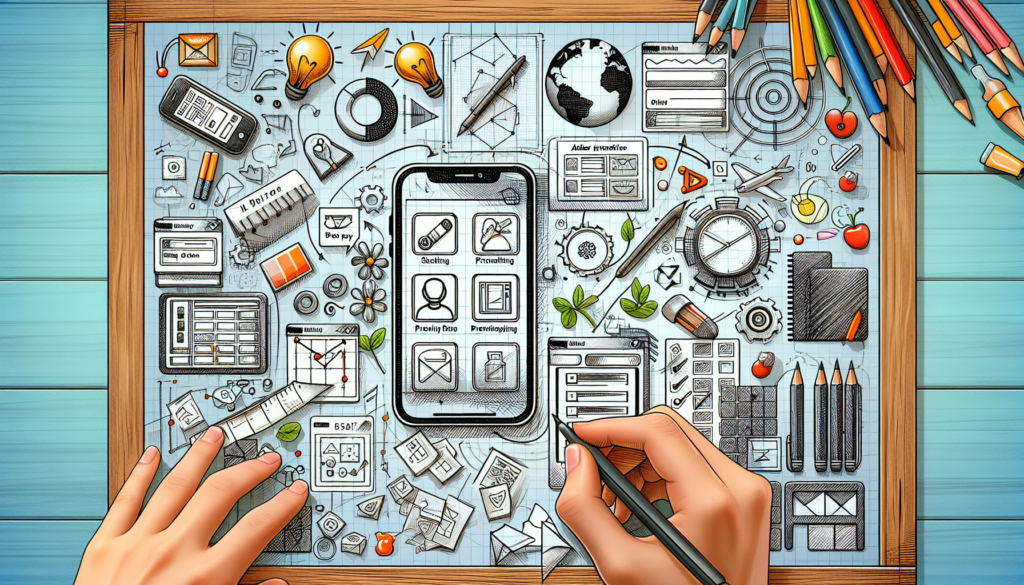In a mobile-dominated era, app design is not just about creating a functional product; it also involves generating memorable and enriching experiences for the user. This requires a meticulous approach that harmonizes the science of technology with the sensitivity of human-centered design. The key lies in thoroughly understanding both the technical capabilities and the user’s expectations and needs. This article delves into advanced techniques and the latest methodologies for designing mobile apps that break barriers in terms of usability, accessibility, and user satisfaction.
Fundamentals of User-Centered Design
User-Centered Design (UCD) is an iterative, multidisciplinary framework that involves the active participation of users to ensure that the final product aligns with their expectations and needs. This approach places the user at the center of all development stages: from research and conception to design, testing, and launch.
User Research and Requirements Analysis
Qualitative and quantitative research provides essential insights into the target audience. In-depth interviews, focus groups, and surveys are tools for gathering data about behaviors, preferences, and frustrations. However, user experience (UX) metrics such as the ‘Net Promoter Score’ (NPS) or the ‘Customer Effort Score’ (CES) offer valuable quantitative data for developing an evidence-based design.
Prototyping and Usability Testing
With the collected data, prototypes are developed to explore different design solutions. These prototypes vary in fidelity, from paper sketches to high-fidelity interactive mockups, and are used in usability testing. Test sessions with real users allow the identification of friction points, testing of design hypotheses, and validation of navigation and interaction flow.
Interaction Design and Information Architecture
Information Architecture (IA) refers to the structuring and organization of content within a mobile app. A clear and logical IA scheme is critical for usability. Interaction design, on the other hand, dictates how the user operates the app. The goal here is to reduce the learning curve and enable an intuitive and rewarding user experience.
Technological Advances in UX Design
Inclusive Design and Accessibility
Inclusive design seeks to create products that are usable by people with the widest range of abilities in the widest range of situations. This goes hand in hand with accessibility guidelines, such as the WCAG (Web Content Accessibility Guidelines), which lay out how to make content accessible, especially for people with disabilities.
Artificial Intelligence and Machine Learning
AI and machine learning applied to UX design allow for real-time personalization and continuous improvement through the analysis of large volumes of user data. These systems can predict user behaviors and adapt the interface to meet dynamic needs.
Emerging Technologies: AR and VR
Augmented Reality (AR) and Virtual Reality (VR) are transforming mobile experiences by enabling innovative forms of interaction. This not only enriches functionality but also opens new avenues for user immersion and entertainment.
Strategic Implementation of UX Design
Principles of Visual Design
Visual design directly impacts the user’s perception and emotions. Typography, color, and composition should be chosen not only to attract attention but also to create a clear visual hierarchy and improve readability.
Performance Metrics and Optimization
The performance of an app, such as load time and the fluidity of animation, is critical for the user experience. Performance metrics should be constantly monitored and optimized. Best practices include minimizing code and careful selection of multimedia elements to ensure a fast and responsive app.
Updates Based on Continuous Feedback
A mobile app is not a static product; it is a service that evolves. Continuous user feedback is vital for iterating and refining the app. UX analytics platforms provide insights on how users interact with the app, leading to updates that respond to changes in user expectations and needs.
Case Studies and Practical Applications
A notable example of a user experience-centered mobile app is Spotify. The music giant has successfully used machine learning to personalize music recommendations, making the user experience unique for each listener. Additionally, its intuitive design and quick response to user feedback serve as a model for user-centered app development.
In the realm of accessibility-focused apps, Microsoft Seeing AI is a pioneer. This app converts the visual world into audio for people who are blind or have low vision, highlighting the importance of inclusive design and the focus on creating valuable experiences for users with varying abilities.
Future Directions and Potential Innovations
Looking ahead, the convergence of AI with conversational user interfaces, such as chatbots and virtual assistants, is setting the stage for the next wave of innovations in UX design. Furthermore, with the advancement of AI technologies, mobile apps will be better able to anticipate user needs and offer proactive solutions.
User experience design is a constantly evolving field where technology and creativity intertwine to create apps that not only facilitate tasks but also create memorable experiences. The insightful integration and fusion of these disciplines will continue to outline the threshold of what is possible in mobile app design.

